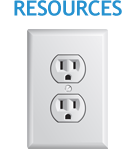Snake safety: Red touches yellow, dead fellow!
News From Diverse Power

(Photo By Dorraine Stanley)
Along with the Georgia heat, linemen and right-of-way workers sometimes have to deal with snakes in summer months. Fortunately, most encounters have no adverse consequences.
Most snakes are harmless— and actually helpful as they feed on mice and other pests. It’s best to leave these snakes alone, allow- ing them to continue their pest control processes.
Nonvenomous snakes in Georgia include king snakes, rat snakes, black racers, garter snakes and many more. The state’s six venomous snakes are the copperhead, cottonmouth (or water moccasin), Eastern diamondback rattlesnake, pygmy rattlesnake, canebrake (or timber) rattlesnake and Eastern coral snake.
In most cases, venomous snakes have triangular shaped heads. There are other ways to tell the difference between venomous and nonvenomous snakes, but by the time you’re close enough to make the distinction, a poisonous snake may bite you.
It is easy, however, to safely determine, from a distance, if the colorful snake you’ve spotted is a poisonous Eastern coral snake or harmless scarlet king snake. Scarlet kingsnakes have alternating bands of red, black and yellow with red touching black but not yellow. The Eastern coral is similarly colored, but red touches yellow and not black, thus the phrase, “Red touches yellow, dead fellow.”
What should you do when you see a coral, copperhead, cottonmouth or other venomous snakes?
Leave it alone. In almost all cases, it won’t bother you if you don’t bother it.






